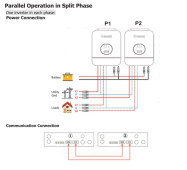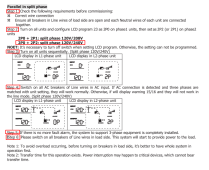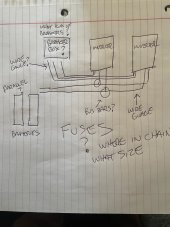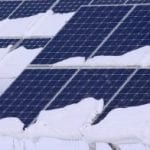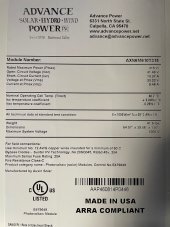No you're fine no worries at all!
Yes the AC panel is the same as your breaker panel...
I would also search You Tube for other videos as well. It's always a good idea to see how many people do things, because you might see some ways that are easier for you to do based on things they locally sell in your area, and what hardware stores around you carry and such. Nothing wrong with the way Will is doing it. It can just be good to fill your brain with other angles as well. David Poz You Tube channel has some good Growatt videos too, and testing with GYLL rack-mount style batteries...
If you use those little breaker things Will is adding there onto the battery lines though (above the bus bars), just don't buy cheesy no-name ones you see on Amazon. Make sure you use a good model like a Bussman HI-AMP or something like that. And remember DC breakers are only rated for DC, and AC breakers are only rated for AC, never use the wrong rated breaker designed for the other...
On your solar panels, you need to make sure you understand about max PV Voc, and Vmp, and such that the inverter can accept, because if you wire too many panels in series, the Voc increases, and you don't want to go over max or you will fry the inverter's PV input. Same on amps (having too many strings in parallel), it could potentially draw too many amps beyond what it's rated for and blow something.
So you need to look at the sticker on the solar panels, add all the Voc's up that will be in series, and add up all the Vmp's that will be in parallel on a PV input and make sure you are sized (according to the inverter spec sheet) well before hooking it up. Remember wiring series, the Voc's add up higher, but Vmp does not (on that string), but if you connect 2 series strings together in parallel, then those Vmp's add up, but Voc will stay the same.
You need to also factor in the coldest temp the panels will ever see in your climate as well, as cold temps drive up Voc. You can use this calculator to help figure that out:
To get the maximum solar panel voltage you should expect from your solar panel, use our solar panel maximum voltage calculator.

gold-coast-solar-power-solutions.com.au
We could help with it too if you provide the sticker or model number on the panels and say how many panels you have again.
Also, check the polarity before you connect the PV panels onto the input (using a voltmeter) just to be safe, before you actually plug it in. Be safe when working around the PV wiring (once they are all connected in series), because when you get a bunch of panels in series, the voltages can be above 200v DC...



